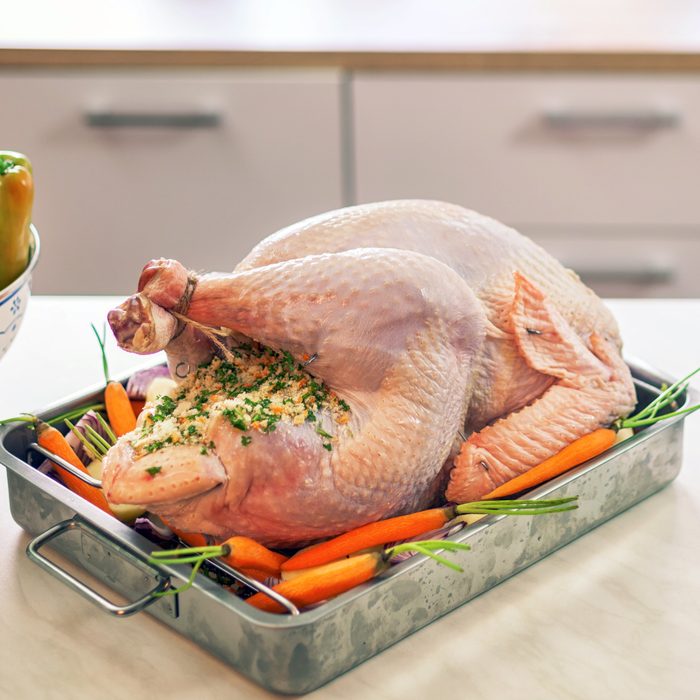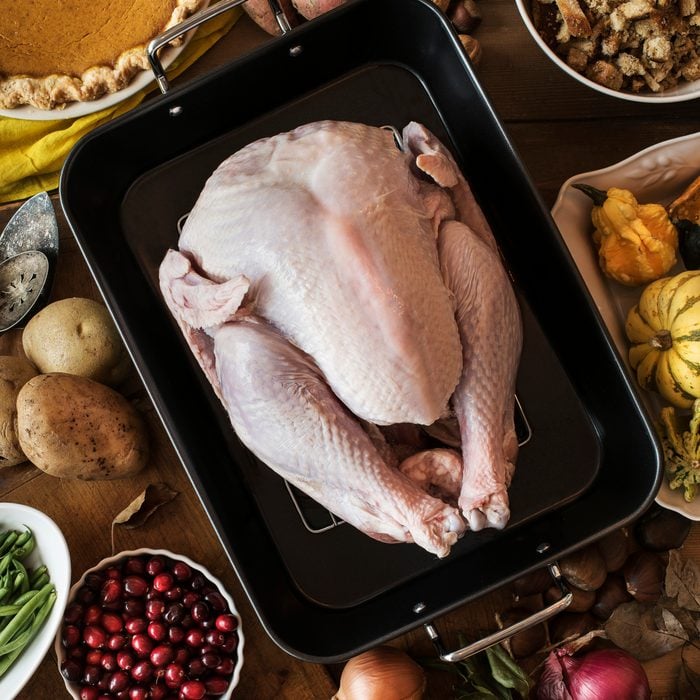
Buy frozen
Some say fresh turkeys taste better, but we can barely tell the difference (other than price). Norma Farrell, a consumer-education specialist at the National Turkey Federation, says there’s no real quality difference between the two. Frozen turkeys are flash-frozen after processing to preserve them, and “fresh” turkeys can be many days old by the time you buy them. And just in case you forget to defrost, you can cook a Thanksgiving turkey from frozen.
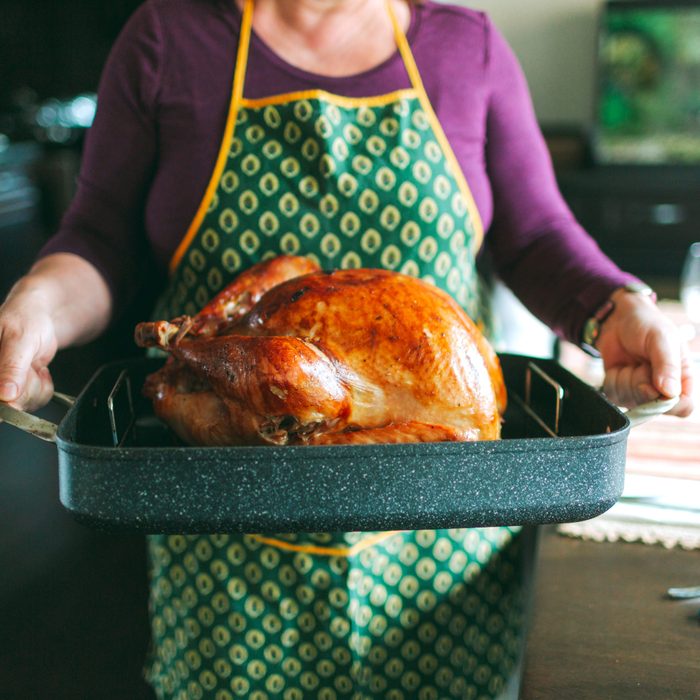
Buy a well-rounded bird
Consider the shape of the turkey before you plop it in your shopping cart. Above all else, look for one with a well-rounded breast—it’ll turn out juicier. Beware of flat spots, which can indicate the bird has been thawed and refrozen. This not only increases the chances of freezer-burned meat, but it also raises the risk of food-borne illness.
Find the right size turkey
Knowing how much turkey per person when planning your shopping is essential, but keep in mind the differences when you’re deciding between a large turkey or a smaller one, Smaller turkeys take less time to cook (and thaw, if you’re buying frozen), and the meat usually turns out more tender. If you’re feeding a crowd, consider cooking two small birds instead of buying a larger one. Just make sure you’ll have enough room in your roasting pan.
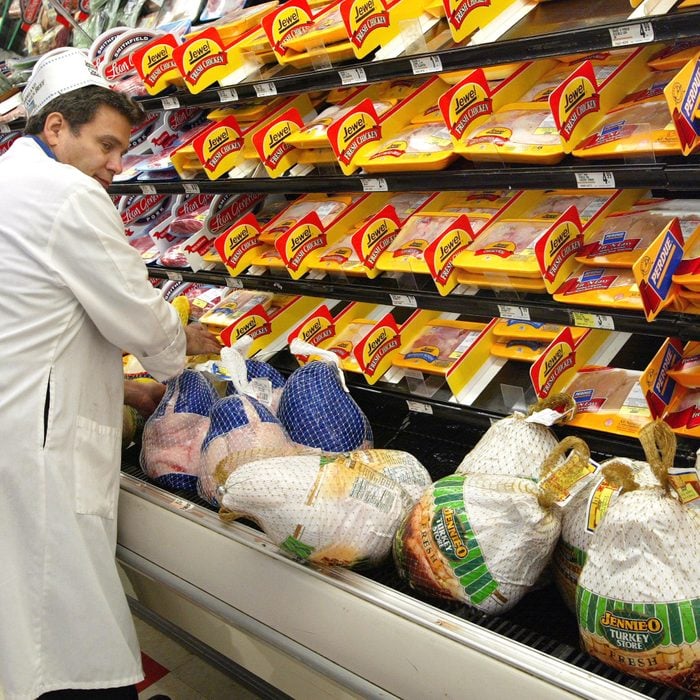
Buy your turkey early
If you’re buying a frozen turkey make sure you purchase it with enough time to thaw it properly: One day for every four pounds. Buying early ensures you’ll be able to brine the turkey—and avoid dealing with turkey shortages—but be careful with fresh turkeys. After purchasing them, they can only be stored up to two days in the fridge.
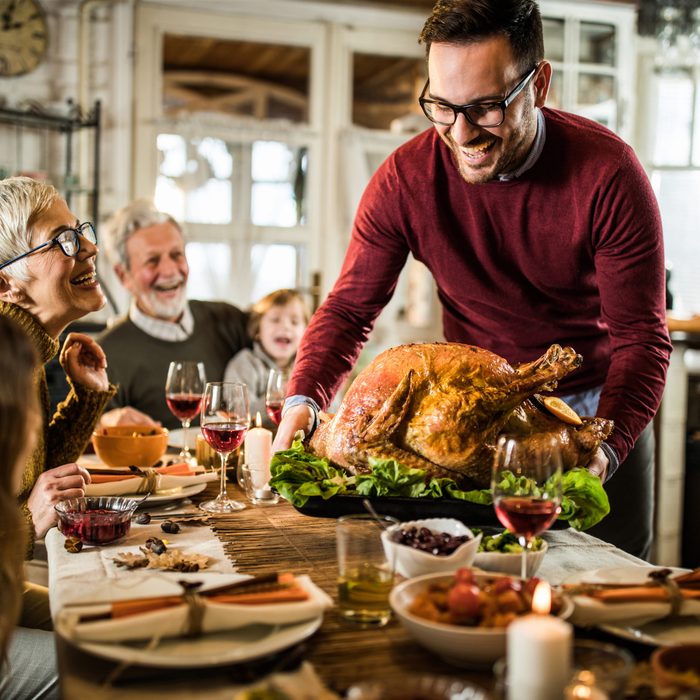
Figure out how much turkey you need
In general, it’s best to aim for about one pound of turkey per person when serving a smaller bird. Larger turkeys have large bones and less edible meat, so a pound-and-a-half per person is a safer bet. Of course, some crowds eat more than others, and you’ll want to be sure you make enough for leftovers. It’s never a bad idea to throw a few extra guests into the calculation. Here’s a quick guide to how much food to serve, course by course.
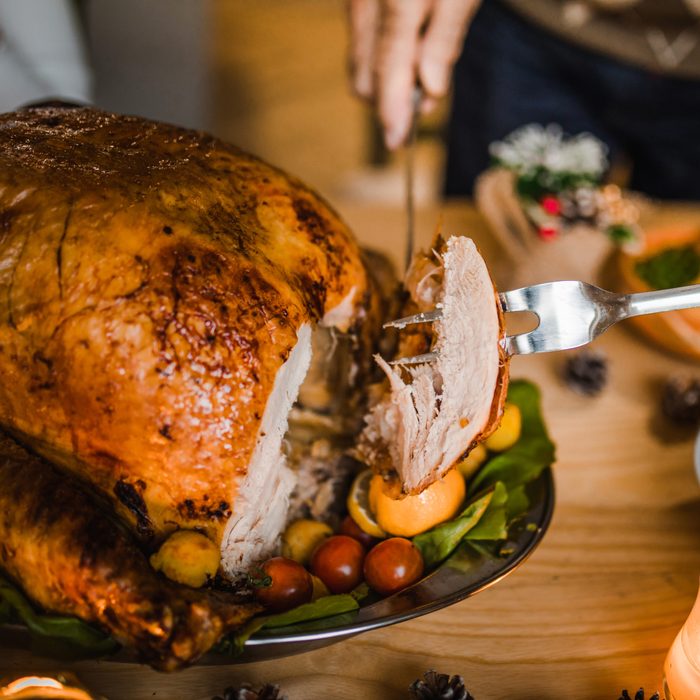
Remember your guests’ preferences
If your guests are particular about their turkey—preferring more white or dark meat—tailor your dinner to meet their needs. Consider buying an extra bone-in turkey breast for the white-meat lovers, or skip the whole turkey if no one in the family likes the dark meat. Alternatively, get a smaller turkey and pick up extra drumsticks or thighs if everyone prefers the dark meat. If you end up with more than your guests can finish, try one of these delicious recipes for turkey leftovers.
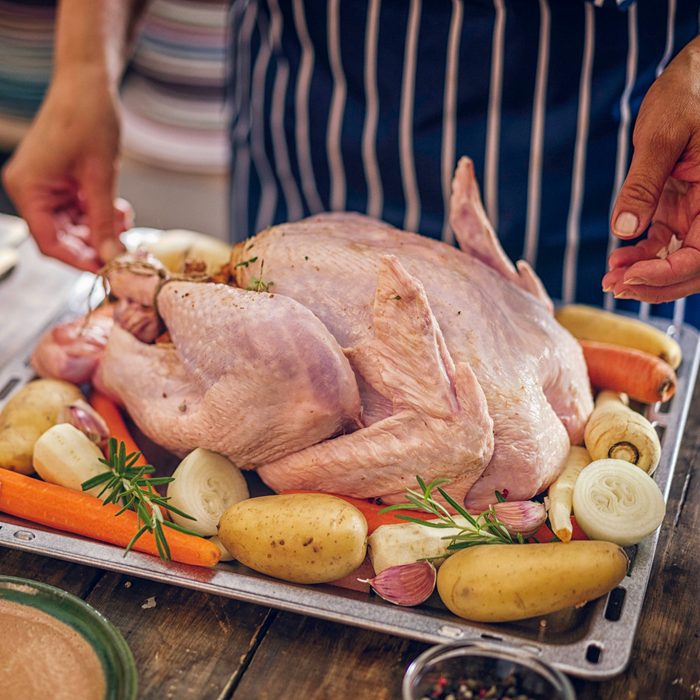
Know what you’re getting with a natural turkey
You can expect to receive a turkey with no additives or preservatives when you buy a natural turkey, but the term isn’t intended to indicate health or nutritional benefits. In short, the FDA’s definition ensures the turkey won’t contain anything that would “not normally be expected to be in that food,” like artificial ingredients or colorings. Check the ingredients label, though, because sodium solutions and broths can still be added to plump-up natural turkeys.
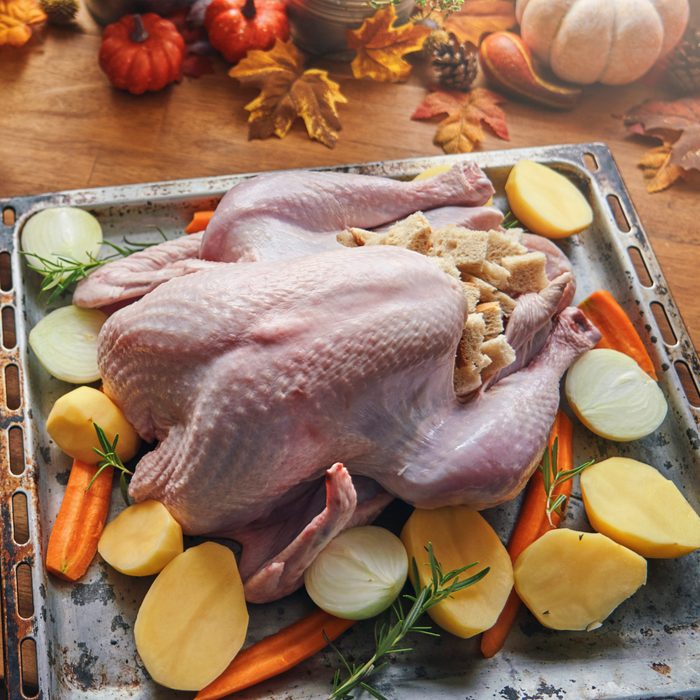
Know the difference between “organic” and “natural”
Organic turkeys are usually the most expensive options for Thanksgiving. They meet the “free-range” criteria, so they have access to the outdoors, and they’re fed a USDA-certified organic diet free of pesticides, synthetic fertilizers, additives or animal by-products. Because they cost more, we recommend saving money by picking a smaller bird. Learn more about how to read poultry labels.
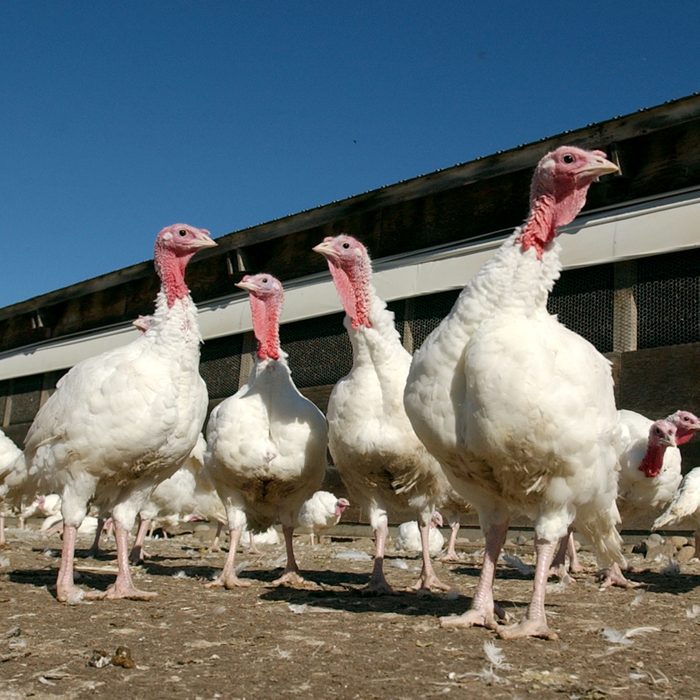
Consider a free-range or pasture-raised turkey
Turkeys labeled as “free-range,” “free-roaming” or “cage-free” tend to be more expensive, but some consumers find this muscular, leaner meat to be more flavorful. Be aware that while the USDA regulates this term, it’s defined as birds that have been “allowed access to the outdoors.” That doesn’t necessarily mean they actually roamed free.
Pasture-raised birds, on the other hand, live outdoors year-round and have more room to roam, but it’s an unregulated term. There really aren’t any guarantees here, either, unless you know your farmer.
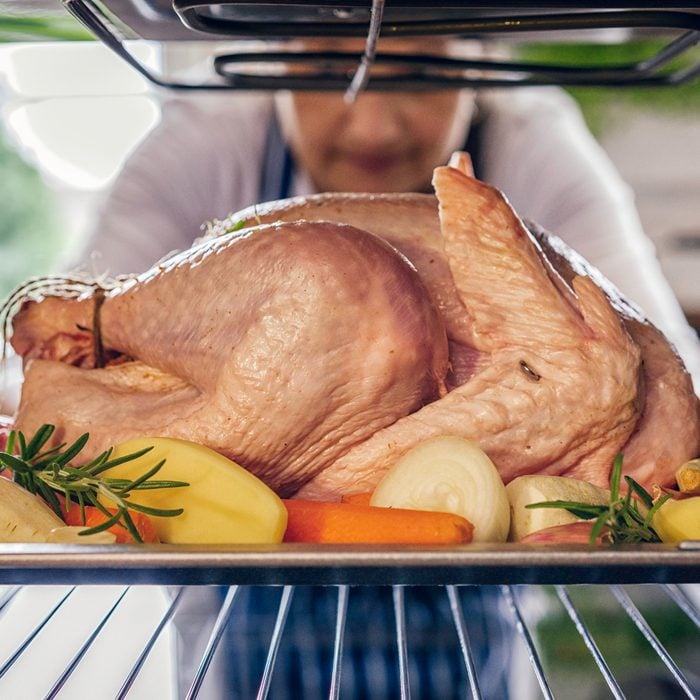
Understand that heritage turkeys cook differently
The classic Thanksgiving turkey is a selectively bred bird known as the Broad Breasted White. These birds produce more white meat, but they can’t fly and don’t get much exercise. Heritage turkeys are more similar to what the Pilgrims would have eaten, and they’re often available from local farms at a much higher price than store-bought turkeys. They’re leaner and more muscular, so they’ll cook faster. Brining is key to ensuring juicy meat, and we also recommend cooking these birds at higher temperatures (over 400°F). For best results, consider making a deconstructed turkey when cooking a heritage turkey.
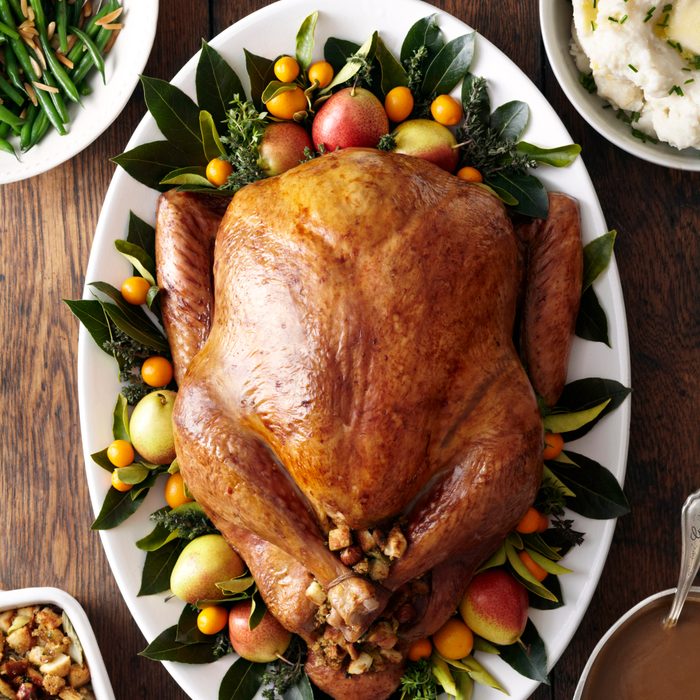
Know what “self-basting” means
Self-basted turkeys make things easy on Thanksgiving Day. These birds have added flavor and moisture because they’ve been “injected or marinated with a solution containing butter or other edible fat, broth, stock or water plus spices, flavor enhancers and other approved substances” (according to the United States Department of Agriculture). If you’re planning to brine or season the turkey yourself, avoid those basted labels.
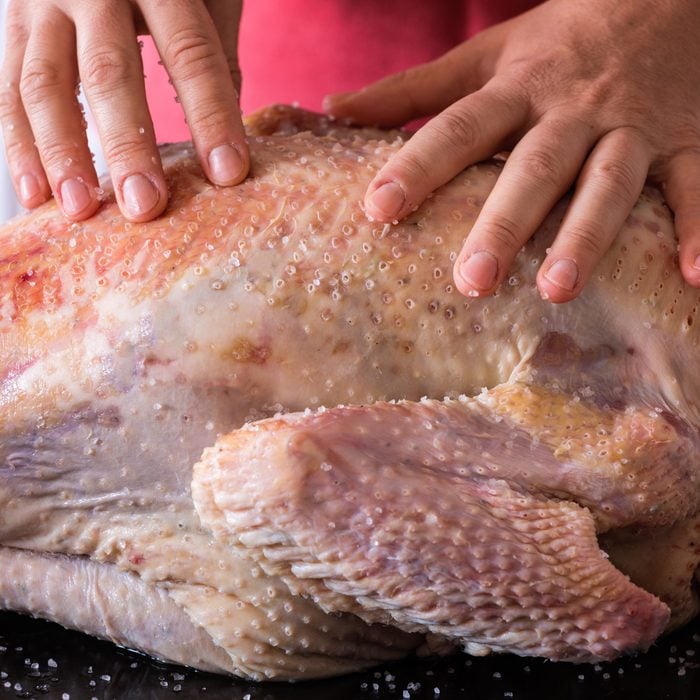
Don’t choose a kosher turkey if you want to brine
Like self-basted or enhanced turkeys, you really don’t want to brine a kosher turkey. These turkeys are salted as part of the processing, so brining them would make them way too salty! They’re a good option if you don’t want to brine and want to skip the added fat and spices of self-basted birds.
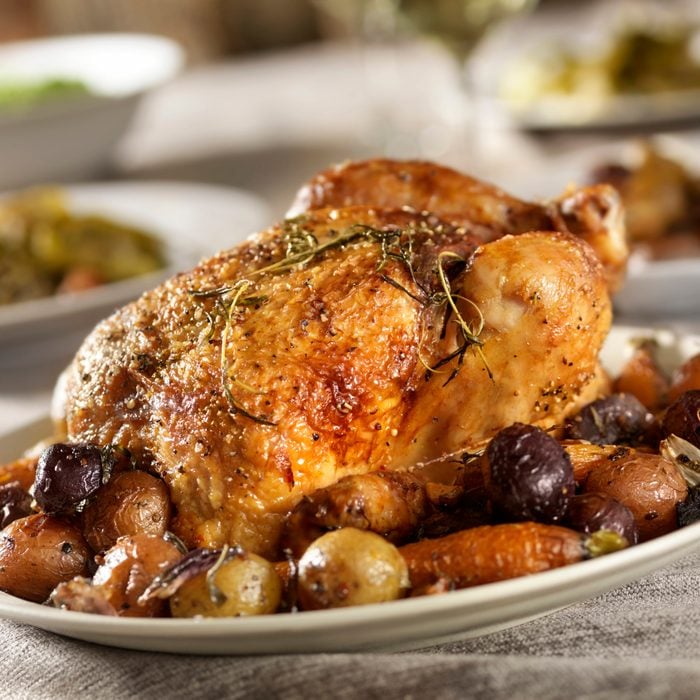
Look for a hen turkey
There are two types of turkeys: female hen turkeys and male tom turkeys. If you buy a turkey that’s over 18 pounds, it’s likely a tom turkey. Other than size, there’s no real difference between the two, except that toms have larger bones and less edible meat. Most grocery stores sell tom turkeys, so you’ll want to shop at a local farm or ask your butcher if you specifically want a hen.
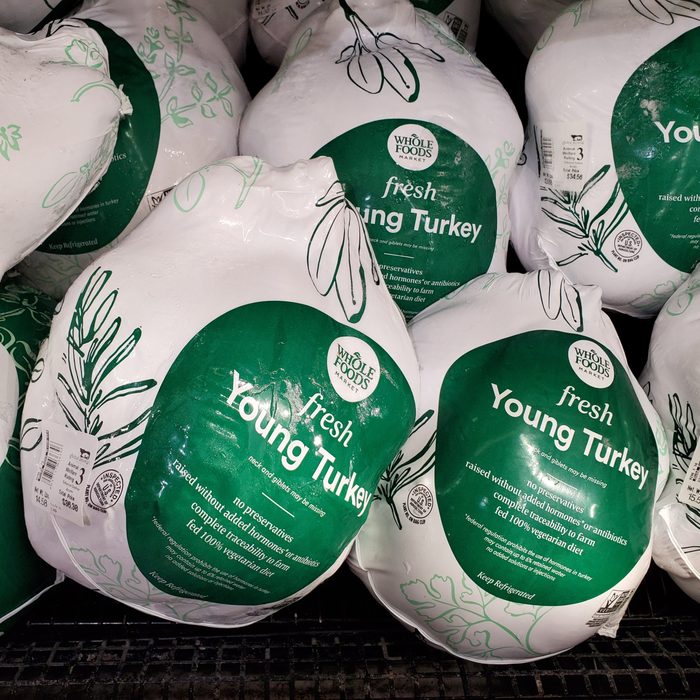
Avoid packaging with tears or holes
Turkeys should be wrapped in plastic that’s smooth and intact, so avoid any ragged-looking packaging. Holes can cause freezer burn, and you’ll have to place the turkey in a new bag if you’re thawing the bird in cold water.
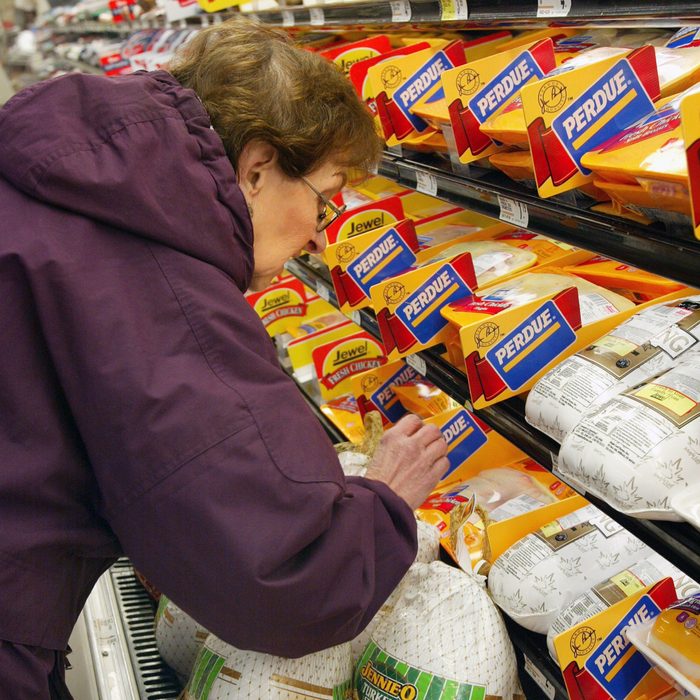
Know what the sell-by date means
You don’t have to worry too much about these dates when buying a frozen turkey, but it’s critical information for fresh turkeys. The sell-by date is seven days after the bird was processed. The turkey will be good for up to two days in the fridge after this date, but you’ll need to cook or freeze it by then so it won’t spoil.
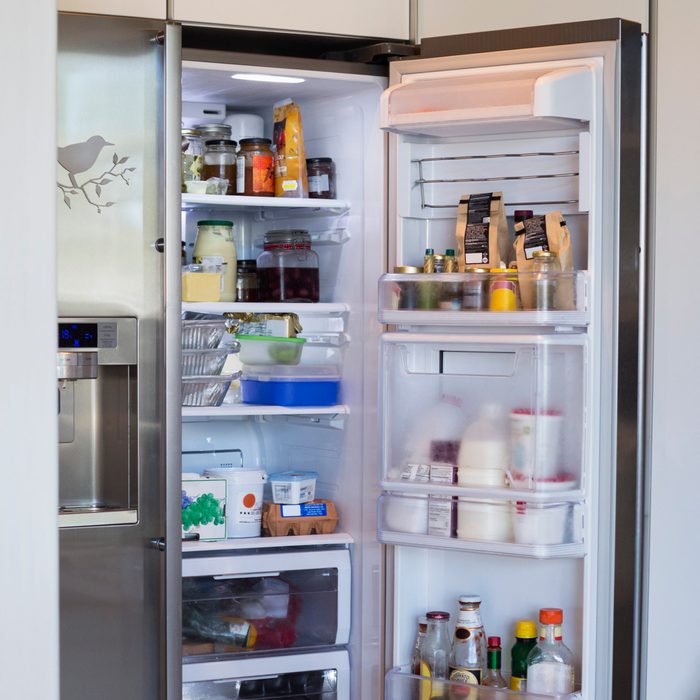
Check your fridge space before buying a fresh turkey
It’s okay to thaw a frozen turkey in a cooler filled with ice packs (so long as the cooler stays below 40°F), but you have to store a fresh turkey in the fridge. Make sure you have enough space before committing to one.
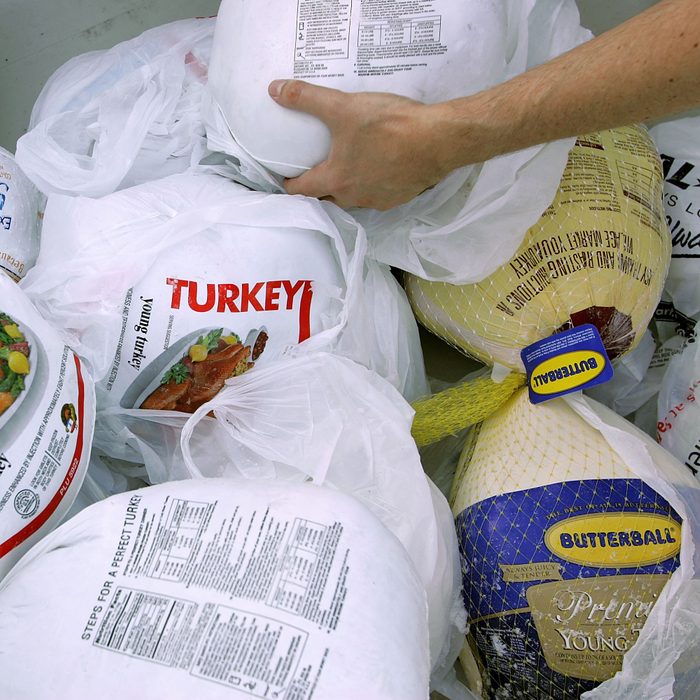
Consider purchasing a generic turkey
If you have the choice, consider buying a generic turkey instead of one from a brand name. They often come from the same place as well-known brands, and they’re usually much cheaper. Most of the time you won’t be able to taste the difference when cooking Thanksgiving turkey. Some brands do use a unique seasoning blend, which may pique your interest if you don’t plan to season yourself.
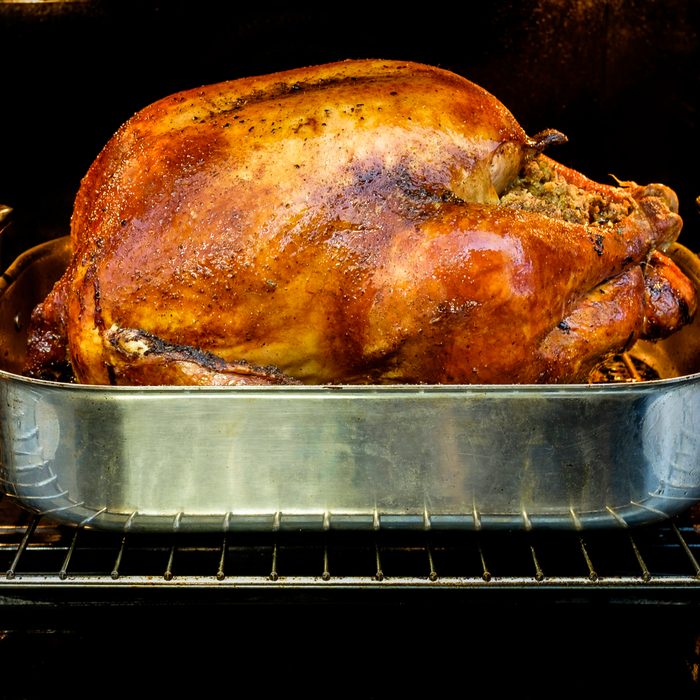
Know your roasting pan’s size
There’s no sense in buying a gigantic bird that won’t fit in your roasting pan (or in your oven!). Know your pan’s dimensions and buy the right size turkey for your pan. While you’re at it, do a quick check of your platters, serving utensils and ensure you have enough leftover containers.
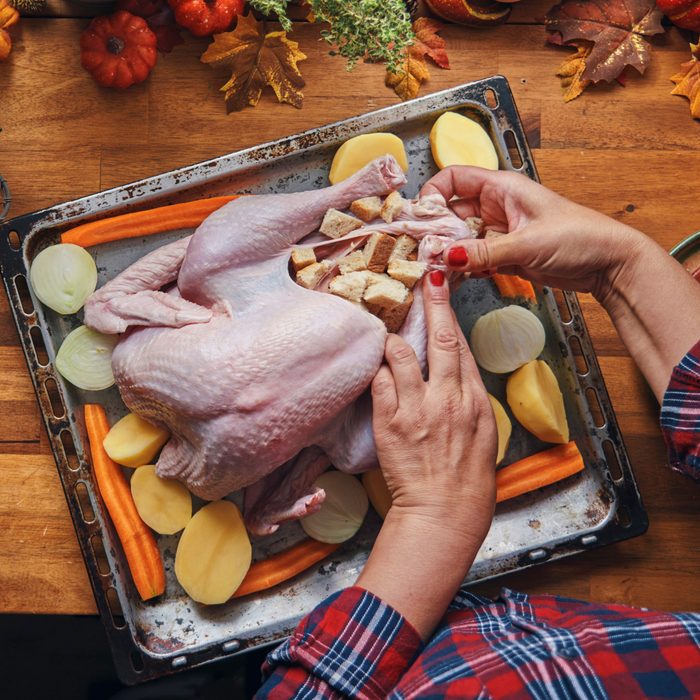
Avoid pre-stuffed turkeys
The USDA doesn’t recommend buying pre-stuffed turkeys because they can be a food safety risk. The stuffing is highly perishable, and the depth of the cavity can cause bacterial growth under the right conditions. Instead, buy a regular turkey and cook the stuffing on the side. We recommend using these flavorful ingredients to stuff your turkey.
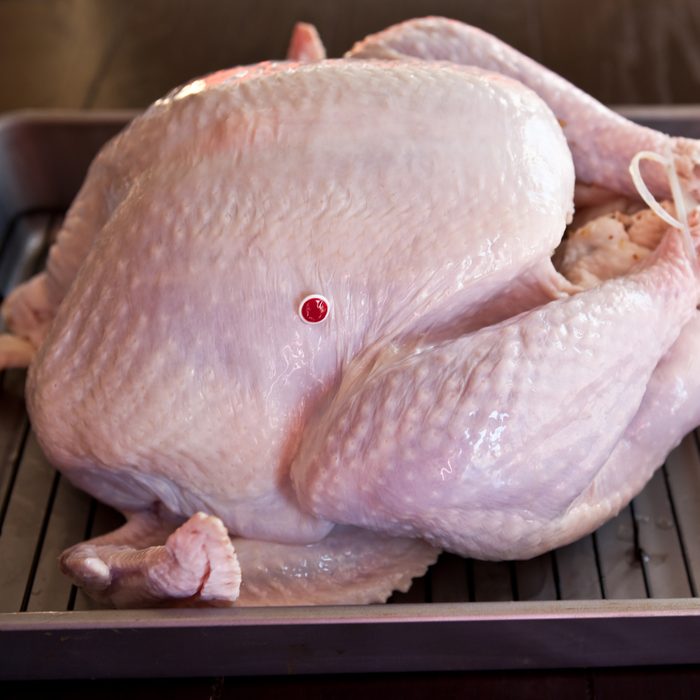
Skip a turkey with a pop-up timer
Some store-bought turkeys come with a pop-up timer or plastic thermometer. If you buy one of these turkeys, take the insert out and toss it in the garbage (or ignore it if it won’t come out). They sometimes don’t pop up at all, and they’re often inaccurate when they do work. Use an instant-read meat thermometer or digital probe thermometer instead.
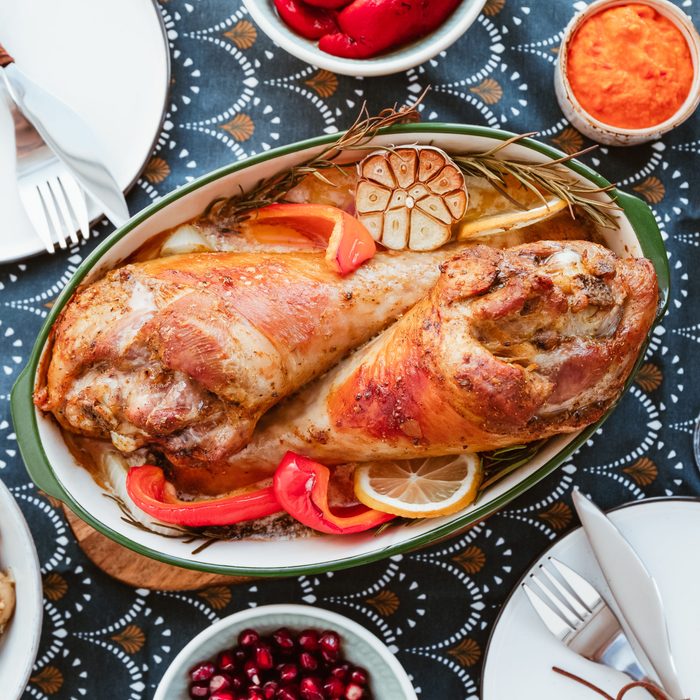
Buy alternatives to a whole turkey
If buying a whole turkey is too intimidating, pick up a turkey breast instead. You can roast it the traditional way in the oven, or free up space by cooking it in a slow cooker. For those who prefer dark meat, braised turkey thighs or hot-and-spicy turkey legs are great options.

